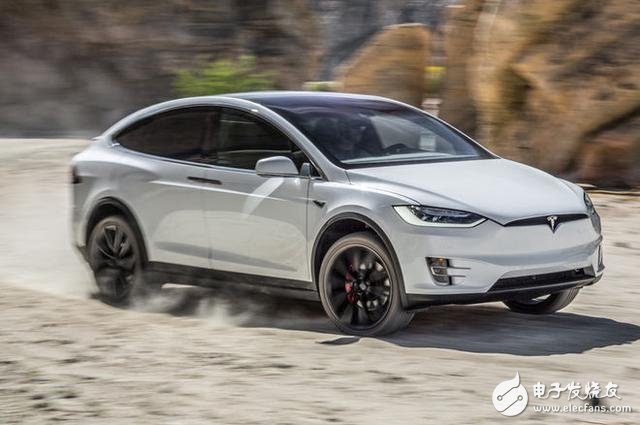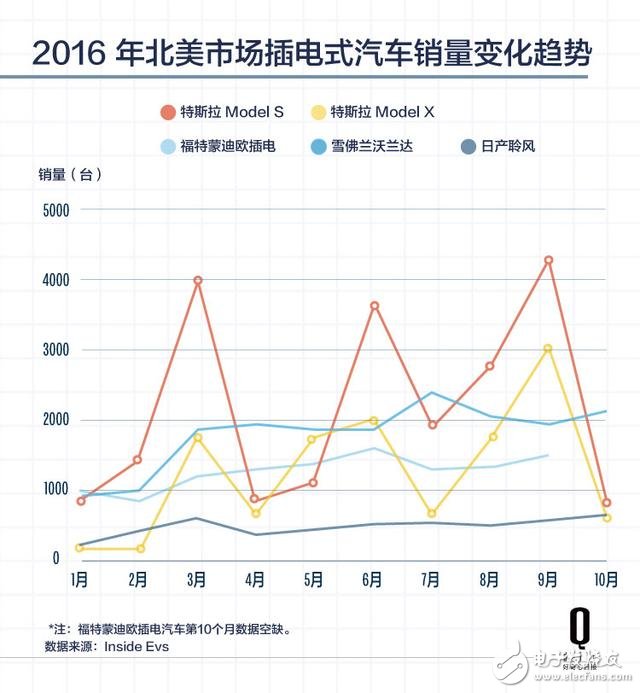Last week, Tesla handed in a very good third-quarter earnings: a net profit of $21.8 million, the first profit since 13 consecutive quarterly losses.
But in the past 10 months, and the first month of the fourth quarter, the sales of Tesla's two models, the Model S and the Model X, were very bleak.
According to the statistics of the Inside EVs website, only 925 Model Ss were delivered in October, and only 725 Model Xs were delivered.

In comparison, in September, the two cars delivered 4,350 and 3,200 respectively. In a month, it fell by 79% and 78% respectively.
This strange situation is not the first time it appears. In the past year, Tesla has surged in the number of deliveries in the month before the end of each financial report, and then fell sharply next month.

In addition to the Tesla Model S and Model X, the other three highest-selling electric vehicles in the US market are Nissan Leaf, Chevrolet Volanda and Ford Mondeo. The sales growth of these three cars is relatively stable every month.
This shows that the entire electric vehicle market itself does not have a three-month fluctuation factor.
This is a unique curve for Tesla and it has been in the last two quarters of 2015.
Tesla never explained why there was such an abnormal trend.
For an automaker, the smooth operation of the production line depends on a smooth production plan – the production volume is planned every month. In other words, this trend is in the Tesla plan.
There is no 4S clerk's quarter-end sales performance for the impact of the bonus. Tesla is in a direct mode. Consumers place orders directly from Tesla, and how many cars are delivered each month is entirely controlled by Tesla and has nothing to do with dealers.
When a consumer places an order in the United States, he only pays a deposit, and when the delivery is made, the full amount is deducted. Only Tesla delivers sales.
In this way, it is quite suspicious to catch up with the sales one month before the release of the financial report.
Tesla did this with only one reasonable explanation - to move the car that was originally delivered in the next quarter, so that the figures for the season are better.
Even Musk himself said so. In September of this year, Musk sent an internal letter to Tesla employees asking all employees to make a good number. “The third quarter will be before the Model 3 is fully loaded,†he said. “We show investors the last chance for Tesla to have positive cash flow and profitability.â€
Today's Tesla really needs investor support. After the release of the low-priced Model 3, Musk said that his goal is to have the company's annual production reach 500,000 in 2018 (only 25,000 in 2015).
At the same time, Tesla also wants to acquire SolarCity, a solar company that is also involved in Musk. This also requires investors to believe in the company's prospects.
Last week's earnings report was indeed the most beautiful season for Tesla.
But this is not a long-term solution. After the release of a good financial report in September, the number of cars delivered by Tesla in October plummeted to the lowest point of the year.
All listed companies have to consider the capital market response. But having to follow the financial report instead of the consumer to adjust their own production plans has to be doubtful, who is the company's business.
Table Gas Cooker,Gas Stoves,Gas Cookers,Tabletop Stoves
xunda science&technology group co.ltd , https://www.gasstove.be